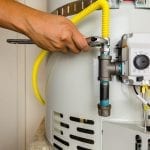How to Extend the Life of Your Home's Hot Water System Through Maintenance
How to Extend the Life of Your Home's Hot Water System Through Maintenance
Blog Article
They are making a few good observations regarding Water Heater Maintenance Tips You Can't Afford to Forget as a whole in this article underneath.

Warm water is important for everyday comfort, whether it's for a revitalizing shower or washing meals. To ensure your hot water system runs successfully and lasts longer, routine upkeep is crucial. This article gives functional suggestions and understandings on just how to maintain your home's warm water system to stay clear of interruptions and expensive fixings.
Intro
Maintaining your home's warm water system may appear overwhelming, but with a couple of basic steps, you can ensure it operates efficiently for years to find. This guide covers every little thing from recognizing your hot water system to do it yourself upkeep tips and understanding when to hire specialist help.
Value of Keeping Your Hot Water System
Regular upkeep not only expands the life expectancy of your hot water system however likewise ensures it runs effectively. Overlooking upkeep can cause lowered efficiency, higher energy expenses, and also premature failure of the system.
Indicators Your Hot Water System Needs Upkeep
Understanding when your warm water system requires interest can prevent significant problems. Look out for indicators such as irregular water temperature, unusual noises from the heater, or corroded water.
Purging the Water Heater
Flushing your water heater removes sediment build-up, improving effectiveness and extending its life.
Checking and Replacing Anode Rods
Anode poles prevent rust inside the container. Evaluating and replacing them when worn is important.
Facility Problems Requiring Expert Assistance
Examples consist of significant leaks, electric issues, or if your water heater is regularly underperforming.
Routine Professional Maintenance Conveniences
Expert upkeep can consist of comprehensive examinations, tune-ups, and guaranteeing conformity with security criteria.
Evaluating and Readjusting Temperature Level Setups
Changing the temperature settings guarantees optimum performance and safety and security.
DIY Tips for Maintenance
You can do numerous maintenance tasks on your own to keep your warm water system in leading problem.
Checking for Leaks
Routinely evaluate pipelines and connections for leaks, as these can cause water damages and greater bills.
Understanding Your Hot Water System
Before diving right into maintenance tasks, it's useful to understand the basic parts of your hot water system. Normally, this consists of the hot water heater itself, pipelines, anode rods, and temperature level controls.
Month-to-month Maintenance Tasks
Normal regular monthly checks can aid capture minor issues before they escalate.
Evaluating Pressure Alleviation Valves
Evaluating the stress relief valve guarantees it operates correctly and stops too much pressure accumulation.
Insulating Pipes
Shielding hot water pipelines decreases heat loss and can conserve energy.
When to Call an Expert
While do it yourself upkeep is valuable, some concerns call for specialist competence.
Verdict
Normal maintenance of your home's warm water system is important for performance, longevity, and cost financial savings. By adhering to these pointers and understanding when to seek professional assistance, you can guarantee a trustworthy supply of hot water without unanticipated disturbances.
Water Heater Maintenance Tips
Test the TPR Valve
Shut off the power and the cold-water supply valve. Place a bucket under the pipe connected to the temperature-pressure-release (TPR) valve on the top or side of the tank. (This valve opens if the tank pressure gets too high.) Lift the valve’s tab to let some water out, then let go. If water keeps flowing, drain the tank partway, unscrew the old valve with a pipe wrench, and install a new one. Check the Anode Rod
Put a hose to the tank’s drain cock and let out a few gallons of water. Now fit a 1 1/16-inch socket onto the rod’s hex head on top of the heater (or under its top plate) and unscrew the rod. If it’s less than ½ inch thick or coated with calcium, buy a new one, wrap its threads with Teflon tape, put it back in the tank, and tighten securely. Use this segmented rod if headroom above the tank is limited. Drain the Tank and Wash Out Sediment
Drain the remaining water in the tank into the bucket, then stir up the sediment on the tank’s bottom by briefly opening the cold-water supply valve. Drain and repeat until clean water comes out of the hose. Close the drain cock, refill the tank, and turn its power back on. Adjust the Temperature
Find the temperature dial on the side of the tank and unscrew its cover. Adjust the dial to 120 degrees using a flathead screwdriver. For every 10 degrees the temperature is lowered, you can expect to save up to 5 percent in energy costs. Turn the water heater off or the thermostat down to its lowest setting if you plan to be away from home for more than three days. Insulate the Pipes
Buy some self-sticking 3/8-inch-thick foam pipe insulation that matches the pipes’ diameter. Slide the foam over the hot-and cold-water pipes as far as you can reach. Insulating the cold-water pipe prevents condensation in summer. Peel the tape and squeeze the insulation closed. If the pipe is 6 inches or less from the flue, cover it with 1-inch-thick unfaced fiberglass pipe wrap. https://www.thisoldhouse.com/plumbing/21016402/how-to-maintain-a-water-heater

I found that review on Water Heater Maintenance Tips You Can't Afford to Forget when scouting around the internet. Are you aware of another individual who is fascinated about the subject? Why not promote it. We treasure your readership.
Book Your Appointment Report this page